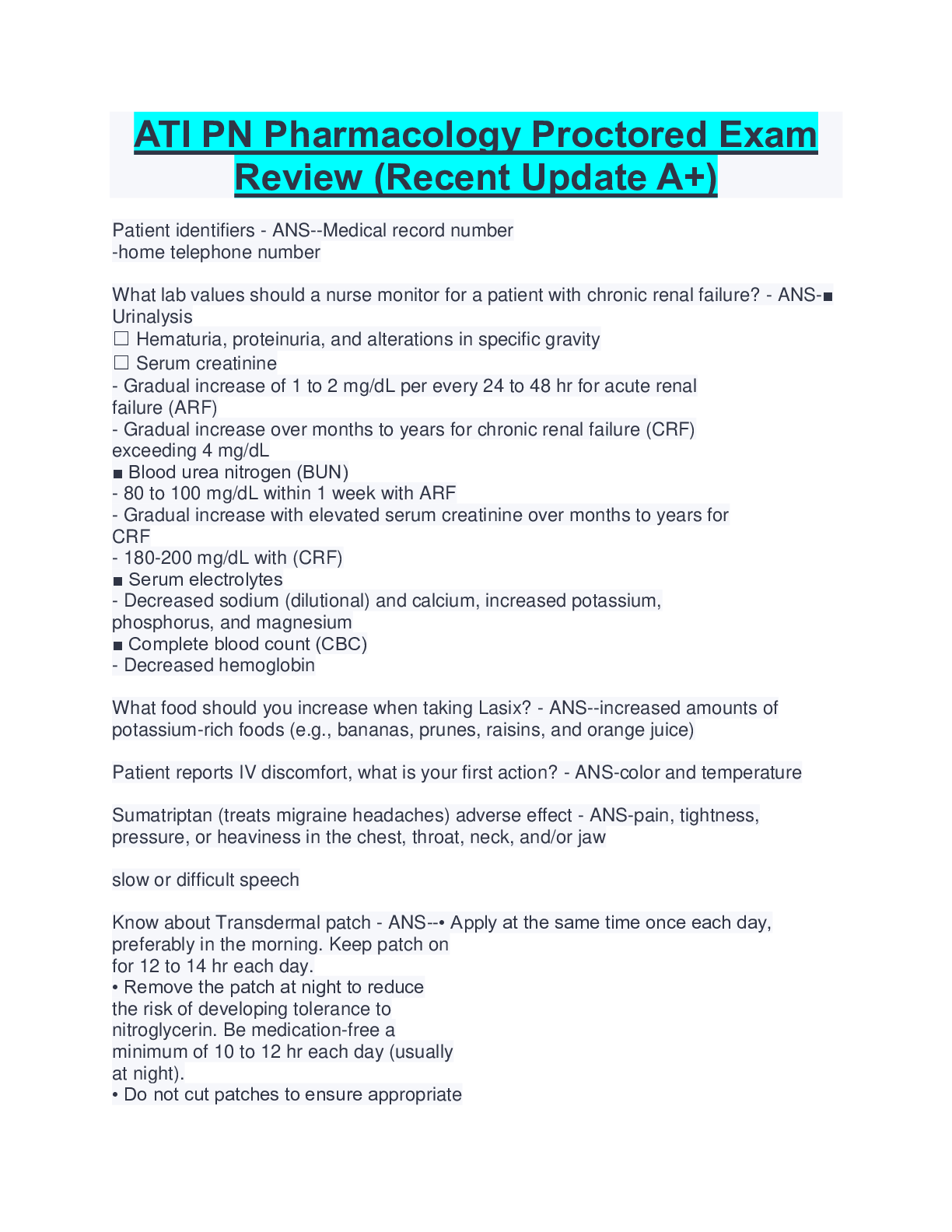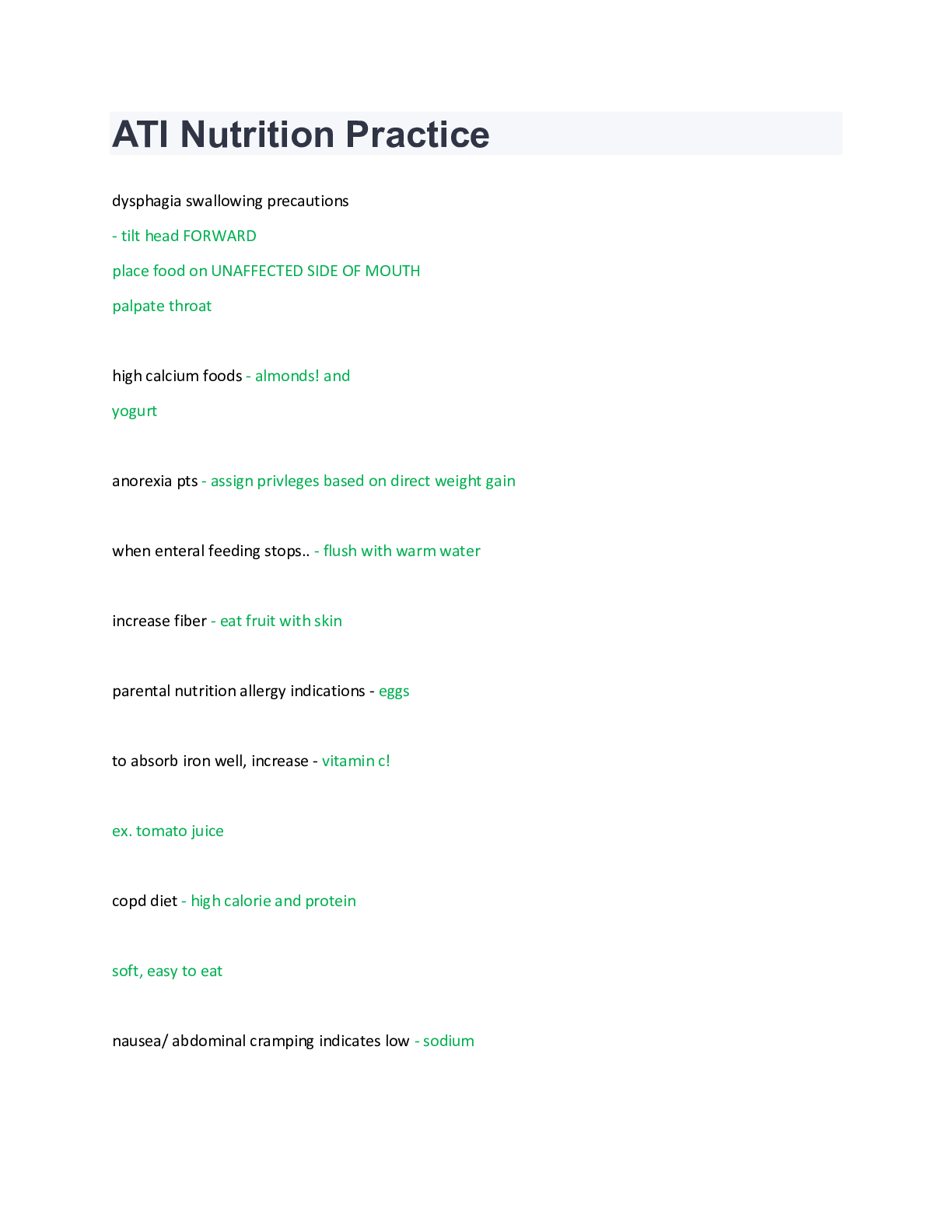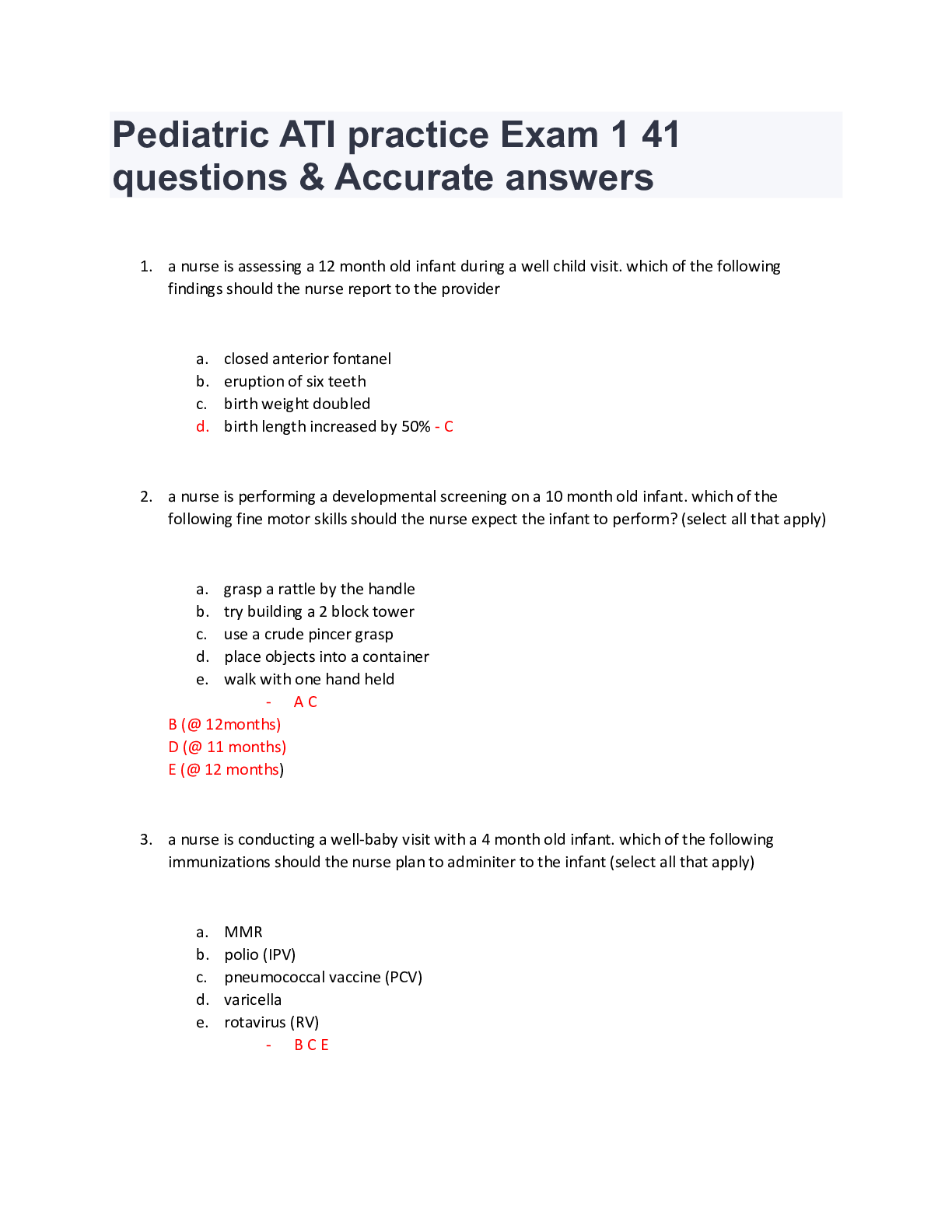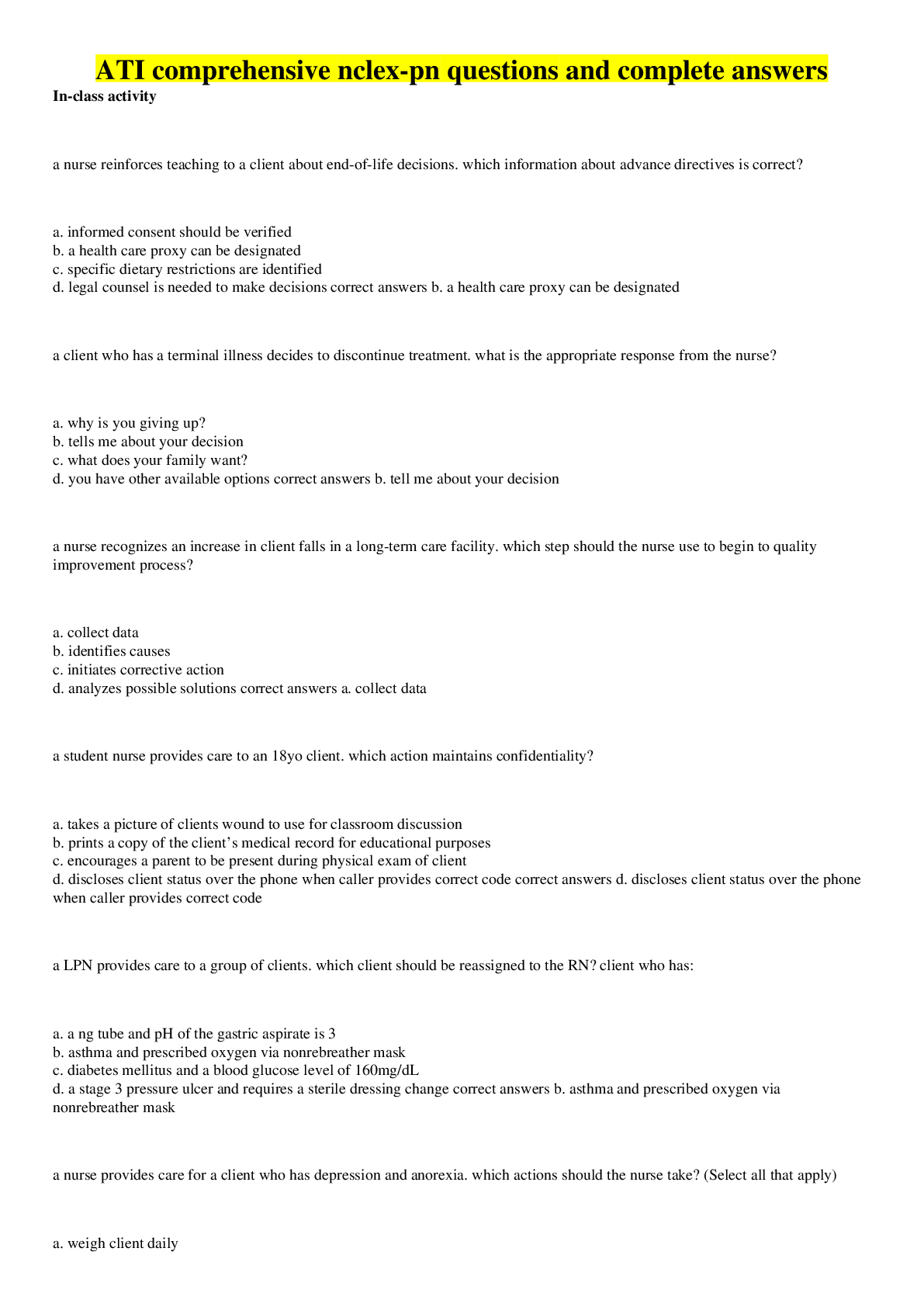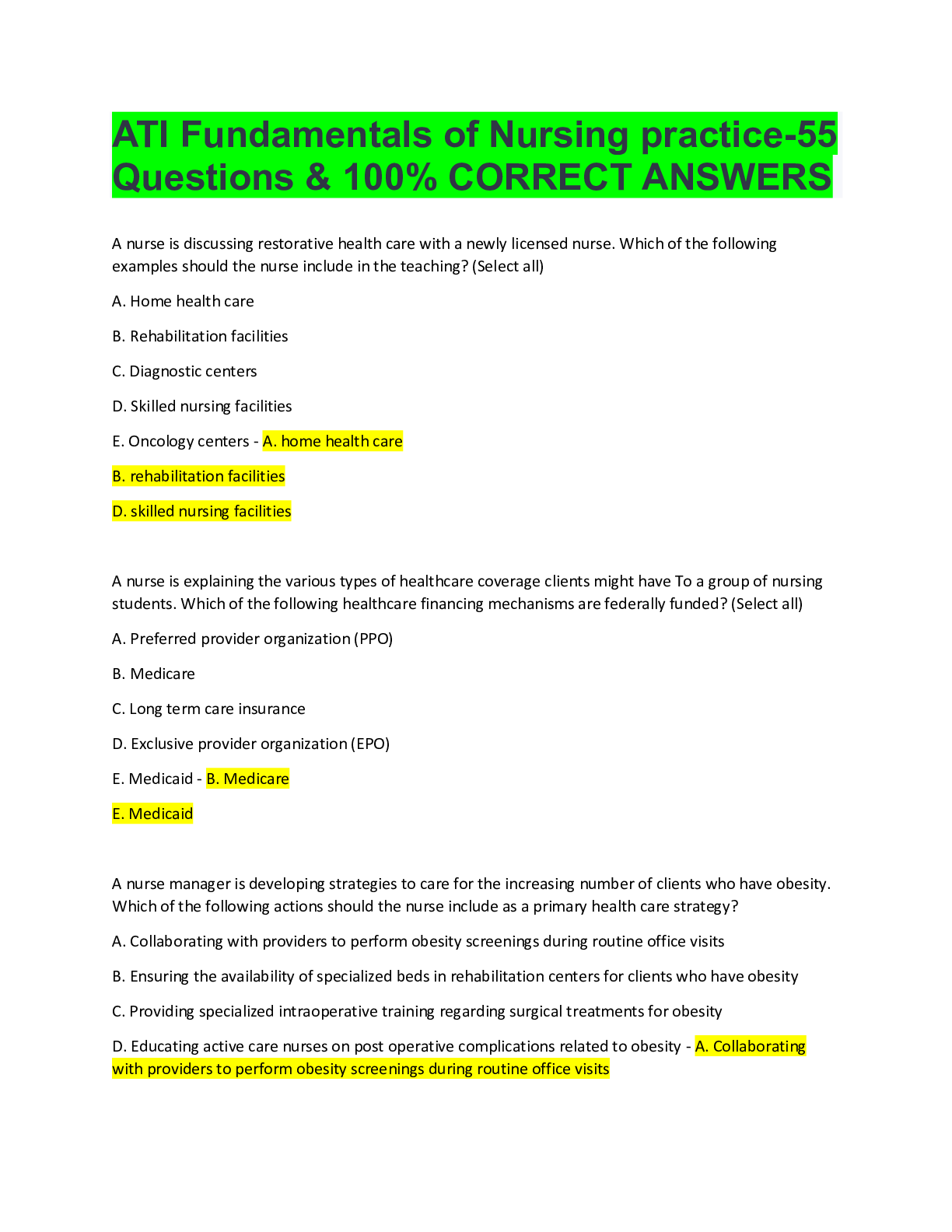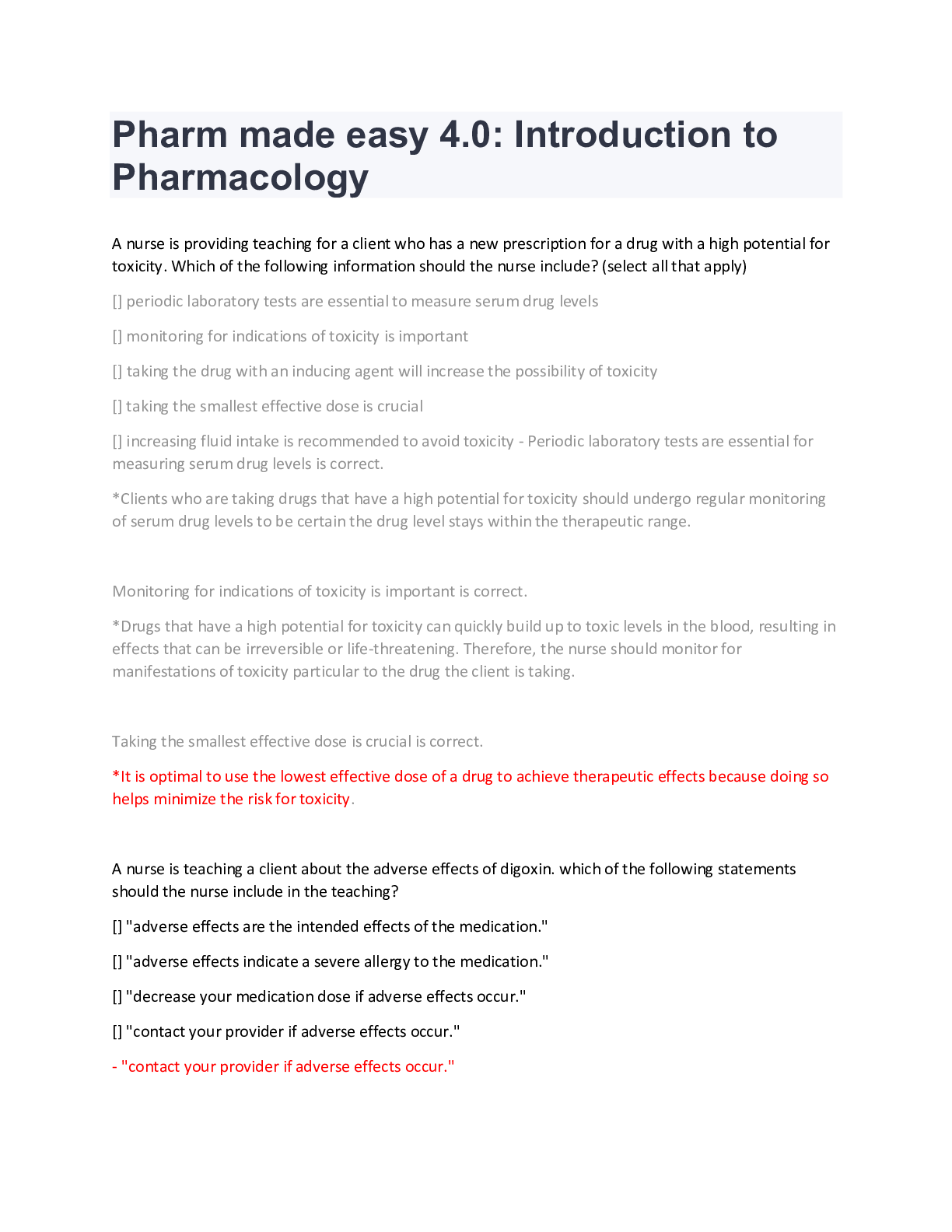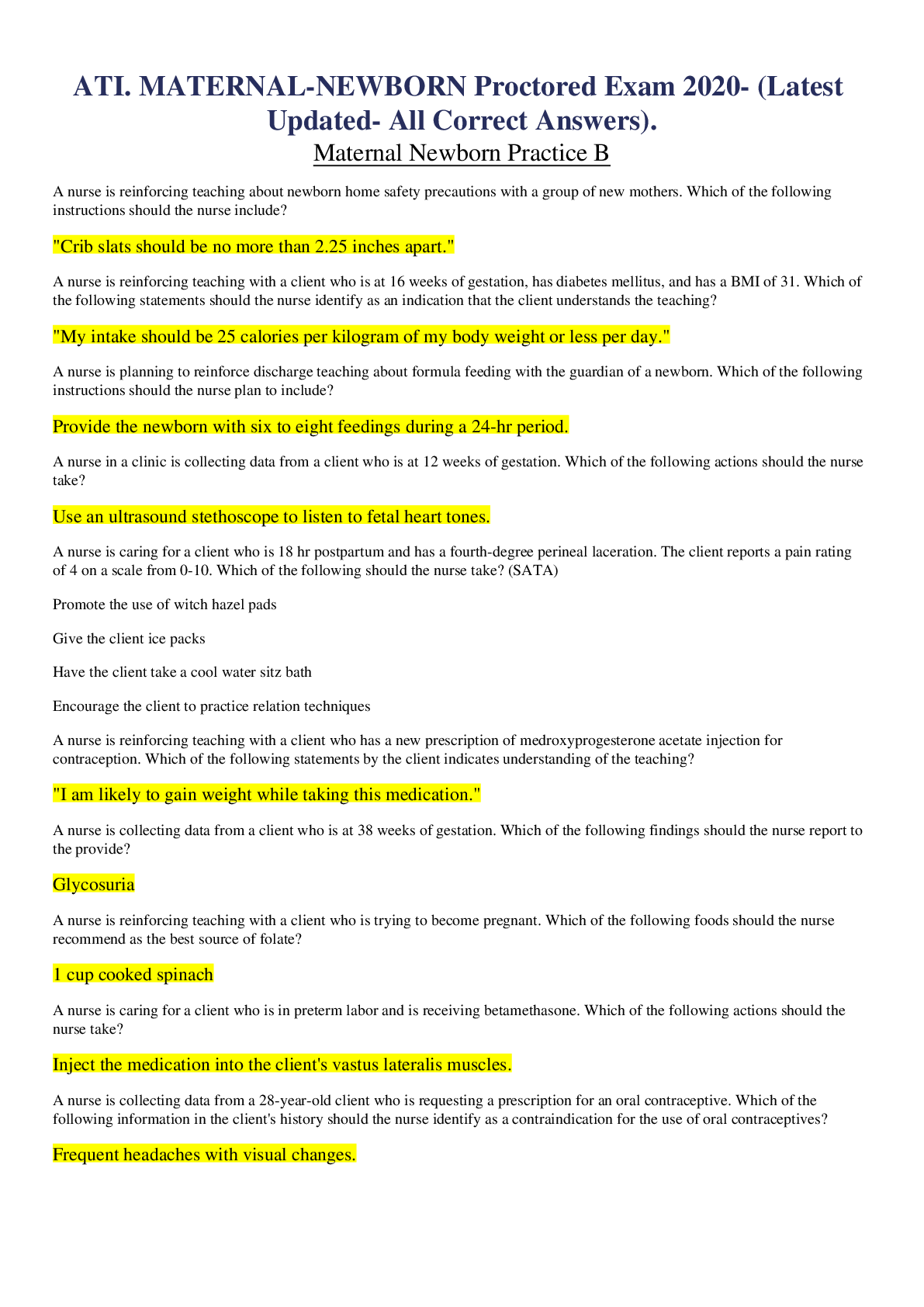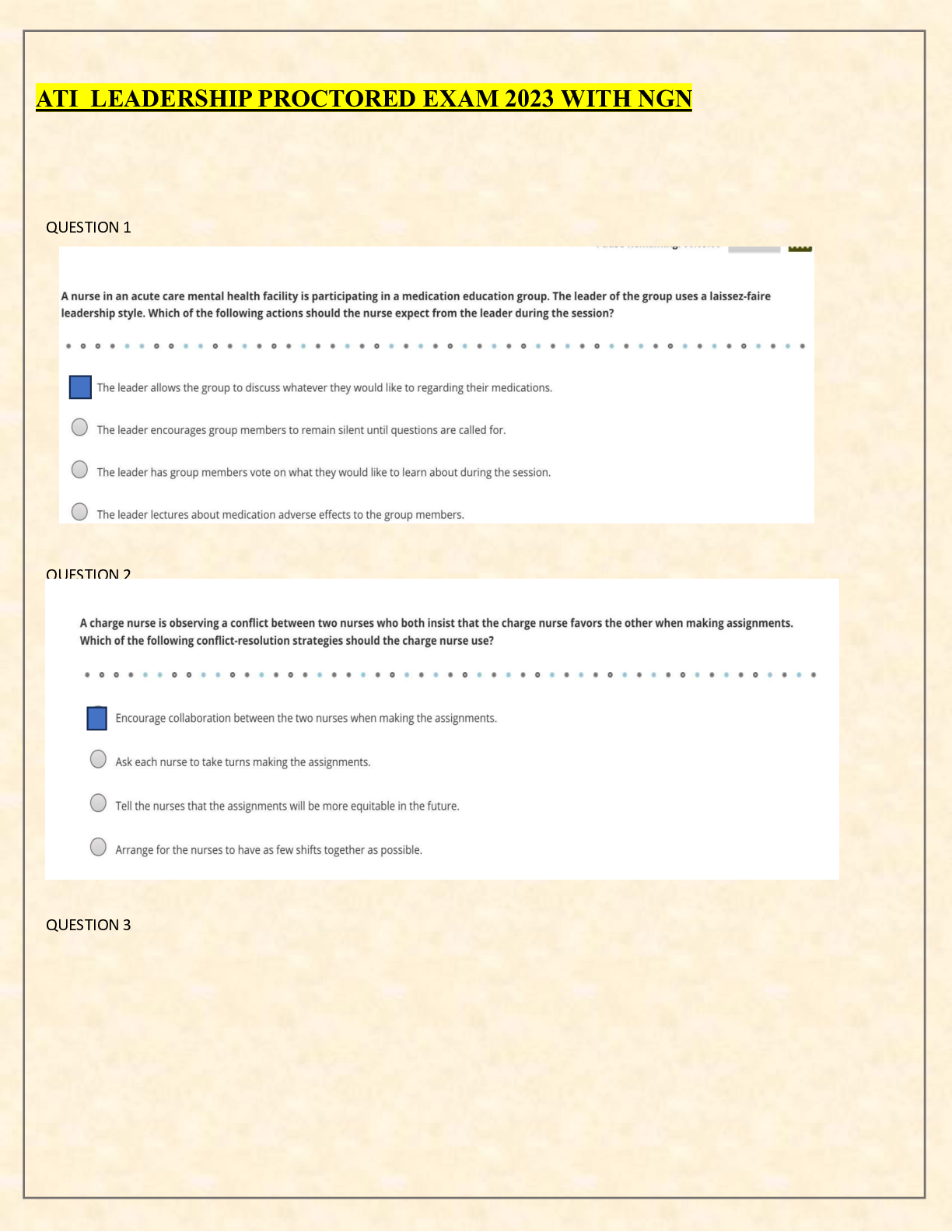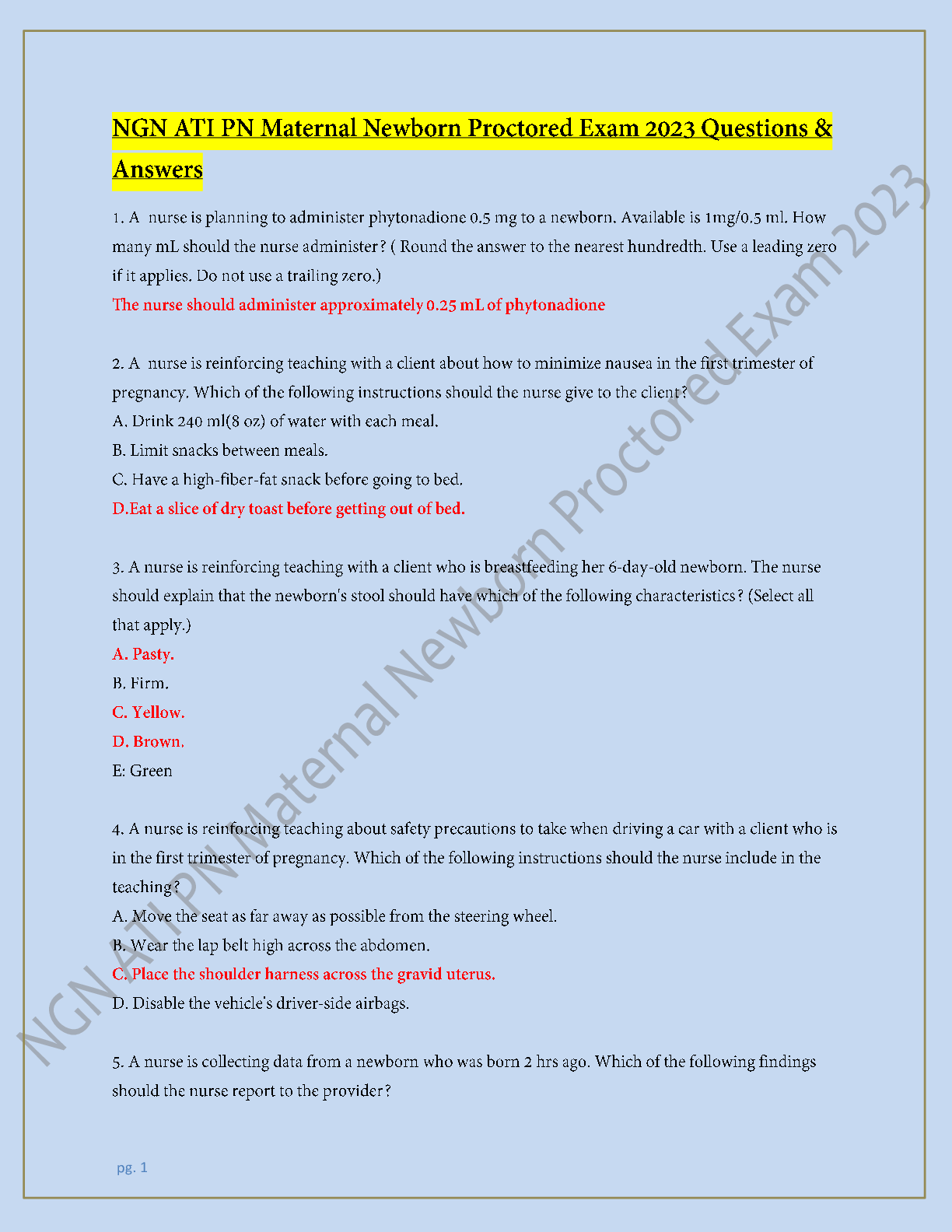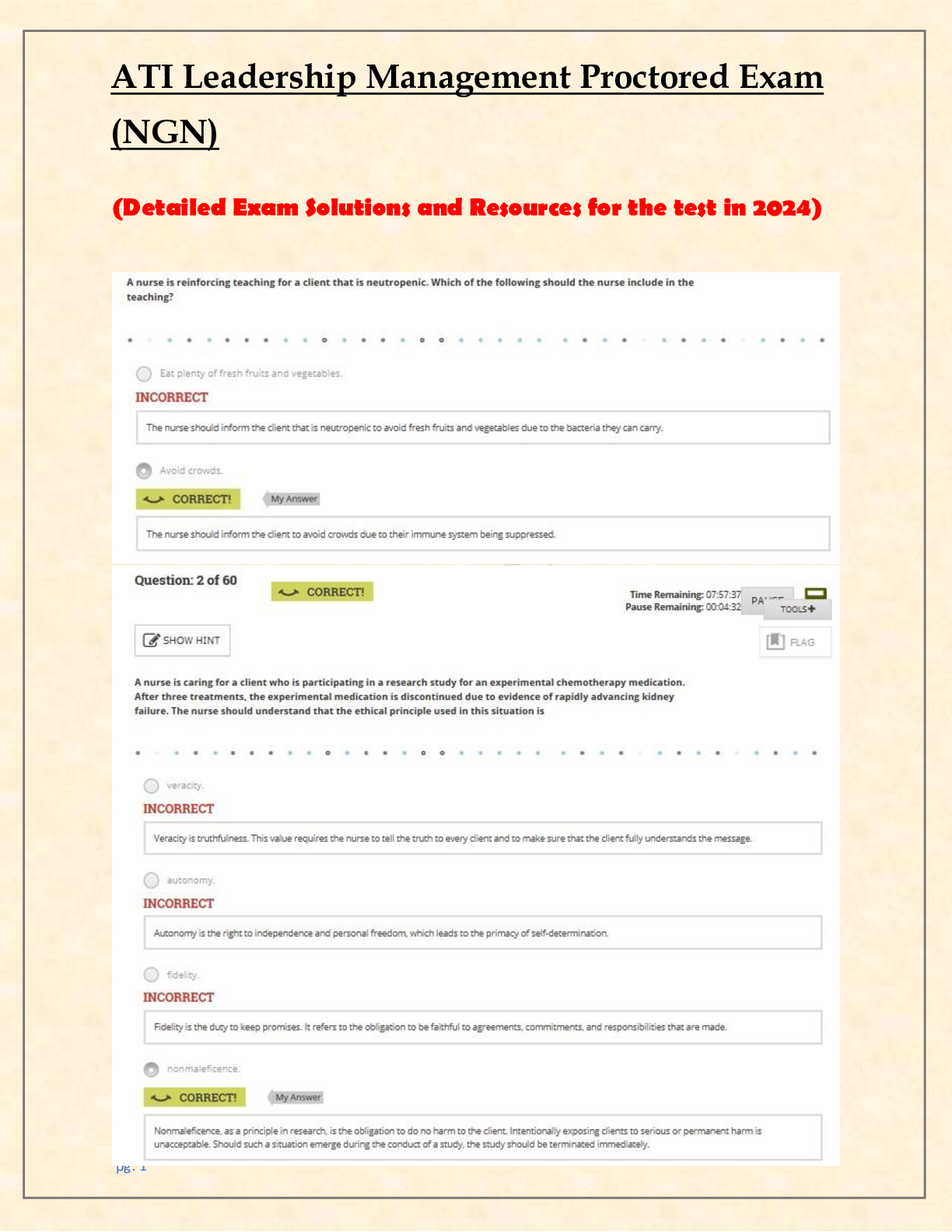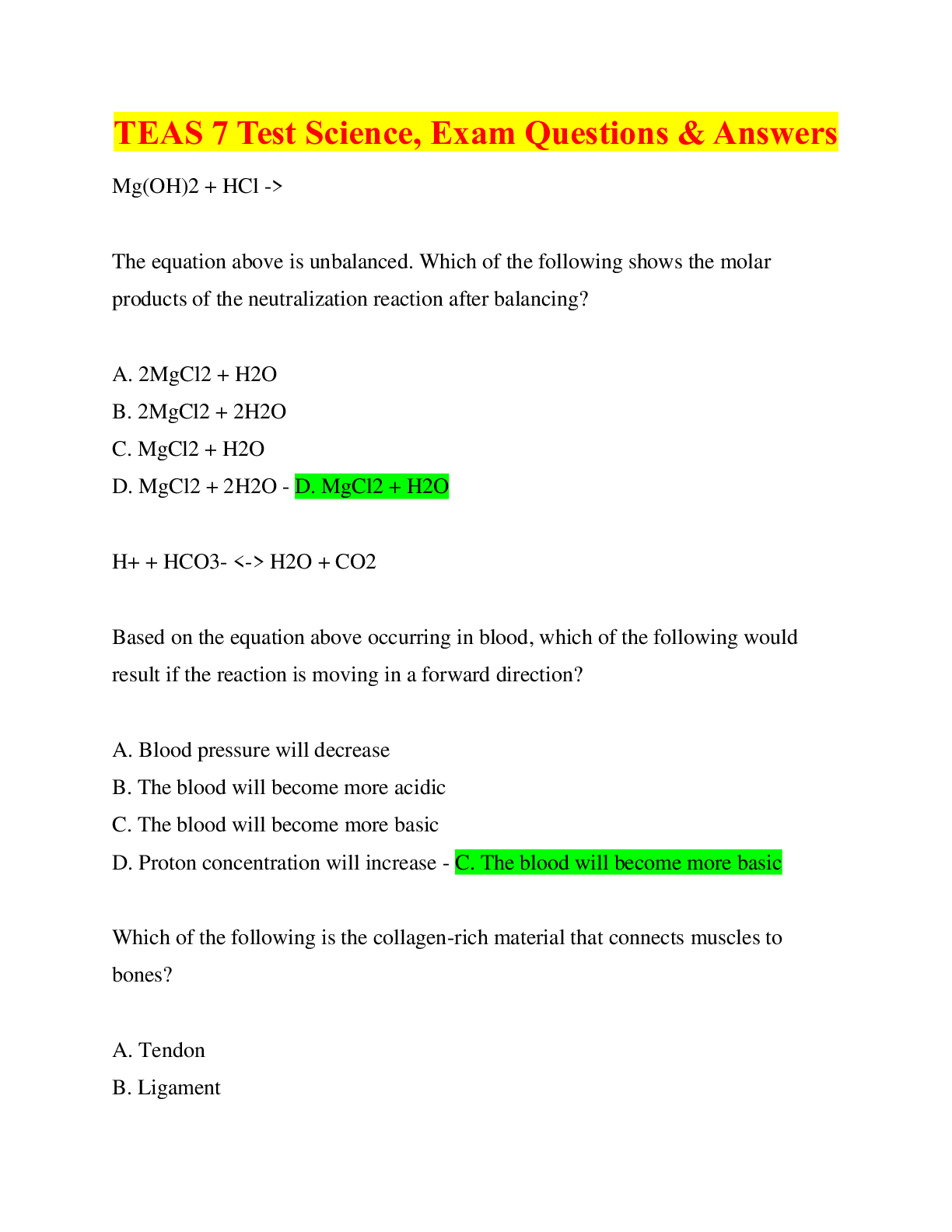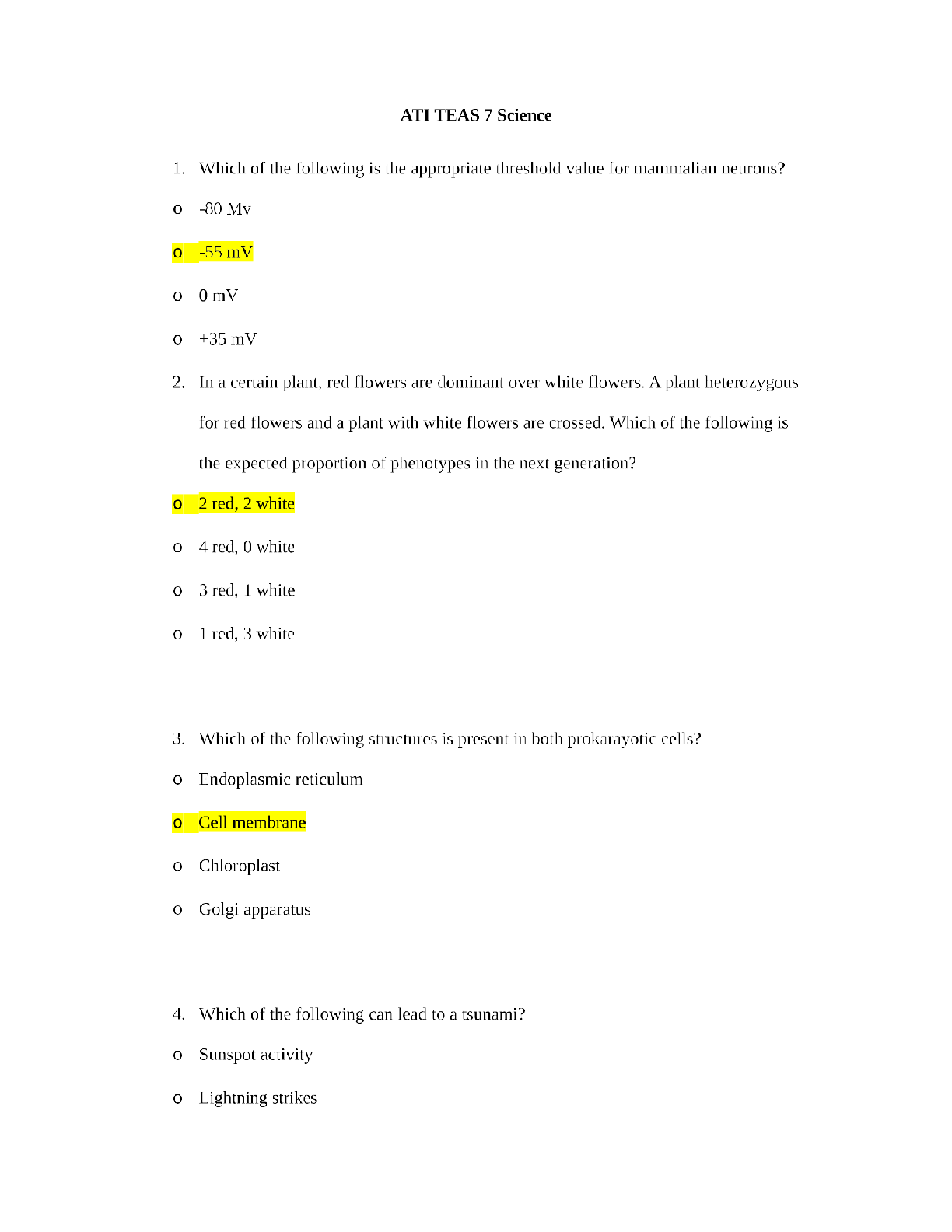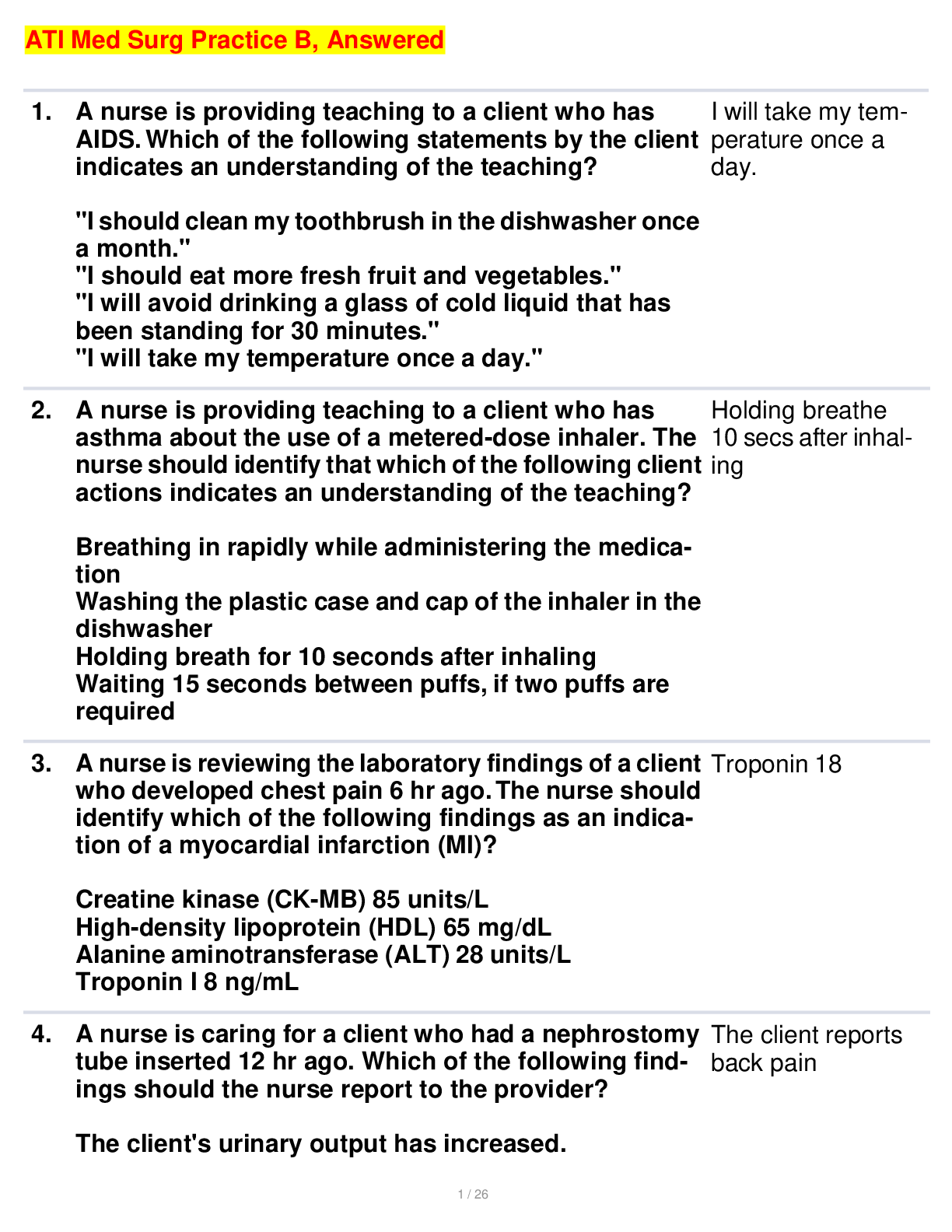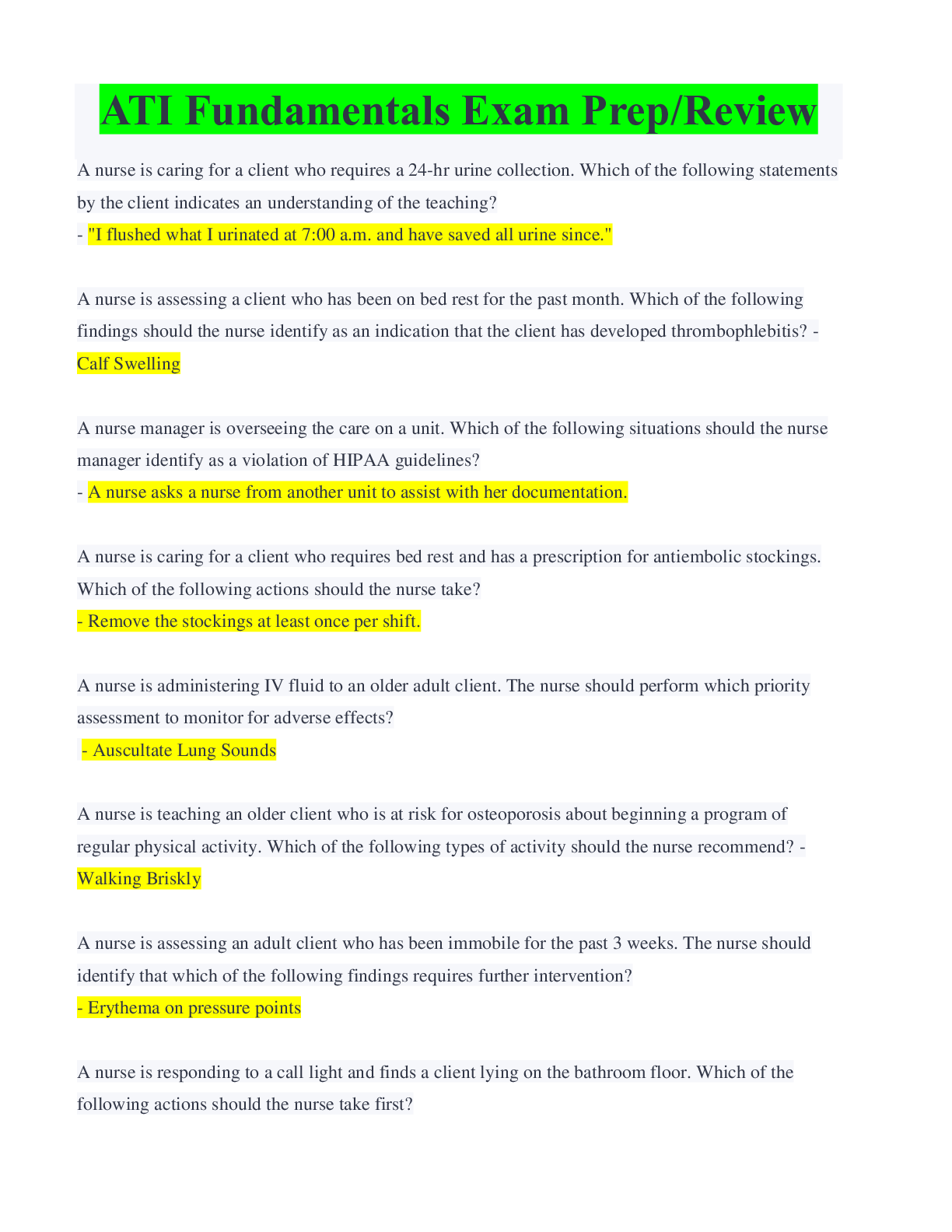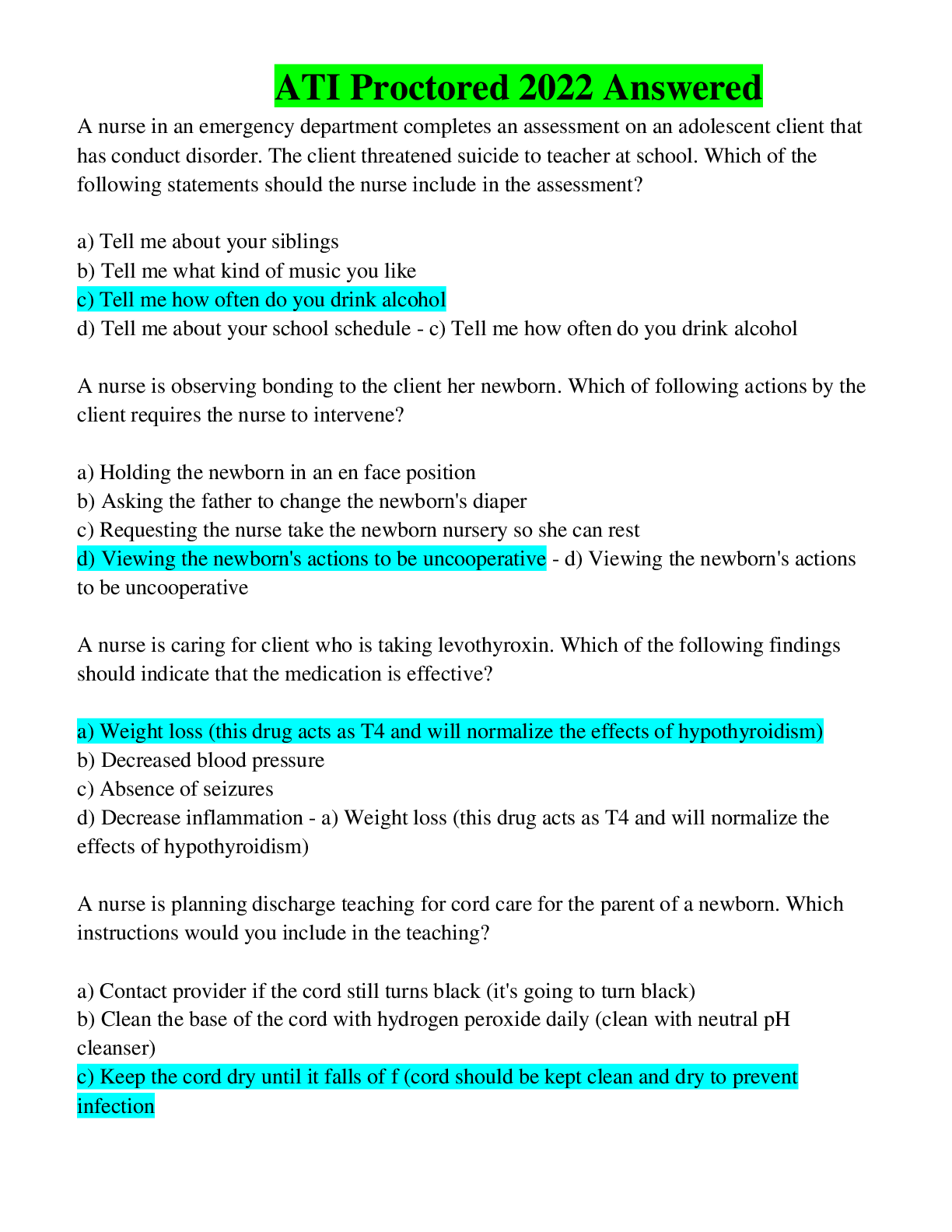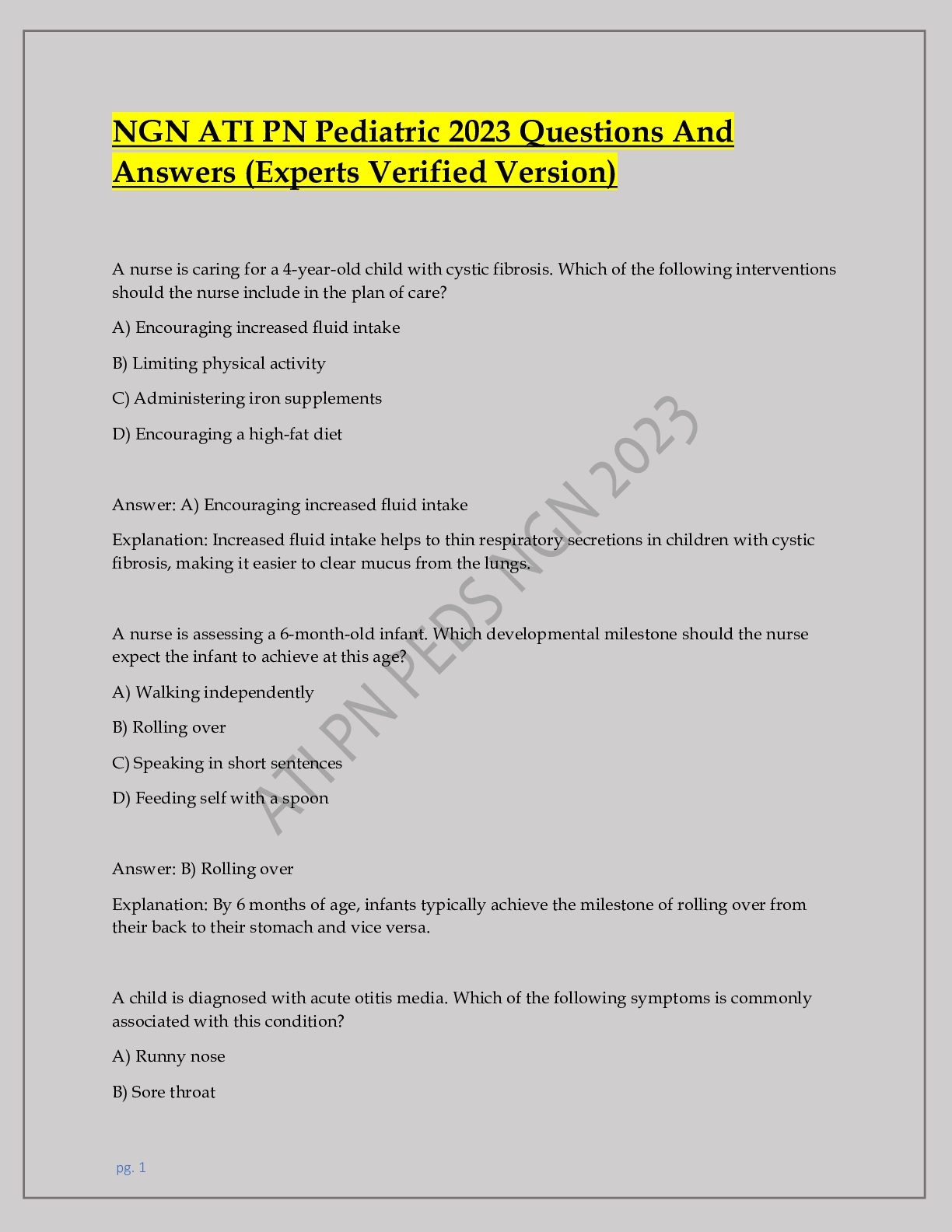Pharmacology > ATI > ATI Pharmacology Made Easy 4.0 Infection. with rationale answers/ explanations (All)
ATI Pharmacology Made Easy 4.0 Infection. with rationale answers/ explanations
Document Content and Description Below
A nurse is caring for a client who has streptococcal pharyngitis and an allergy to penicillin. The nurse should recognize that which of the following drugs can be safely administered to this client? ... - Azithromycin/Erythromycin. Rationale: Azithromycin, a macrolide, is an acceptable alternative to penicillin for patients who have bacterial infections and are allergic to penicillin. The medication is effective against many gram-positive and gram-negative bacteria and is used for streptococcal pharyngitis. - Nafcillin and amoxicillin/clavulanic acid are penicillins and are contraindicated for those w/a penicillin allergy. Vancomuycin and clindamycin are safer alternatives. - A small percentage of clients who are allergic to penicillin have a cross sensitivity to cephalosporins. Cephalexin is a cephalosporin and is an inappropriate choice for the client. A nurse is administering cefotetan IV to a client to treat an intra-abdominal infection. The nurse notes that the IV insertion site is warm, edematous, and painful to the touch. Which of the following actions should the nurse take? - Stop the cefotetan infusion. Rationale: The nurse should stop the infusion, remove the IV catheter, assess for tissue damage, and treat the client accordingly. The nurse should then initiate IV access via another site, continuing cefotetan therapy according to prescribed parameters. - Because the client could have thrombophlebitis, slowing the infusion will not alleviate the potential tissue damage or risk of embolus, and the IV site should be changed. To prevent thrombophlebitis, the nurse should dilute cefotetan, a second-generation cephalosporin, and infuse it slowly over 20 to 30 min. - The edematous, painful, and warm IV insertion site does not indicate an allergic reaction. The nurse should administer an antihistamine, such as diphenhydramine, if the client has hives, a rash, or other indications of an allergy to cephalosporins. - Switching the client to another antibiotic is essential when the current drug is ineffective or the client has an intolerable reaction to it. A nurse is caring for a client who has a new prescription for aztreonam to treat a respiratory tract infection. Which of the following findings in the client's medical record should the nurse recognize as requiring cautious use for this rx and report to the provider? - Renal impairment. Rationale: Aztreonam, a monobactam, requires cautious use with clients who have renal dysfunction because it is excreted in the urine. Renal impairment could affect the excretion of aztreonam, allowing the level of the drug to accumulate. The nurse should report this finding to the provider, so the provider can prescribe a lower dose for the client or prescribe a different antimicrobial drug. - Contraindicated in those with a viral infection, used cautiously in older adults. - Metronidazole is an antimicrobial drug that req's cautious use in those with HF. A nurse is providing teaching for a client who takes an oral contraceptive and is about to begin rifampin therapy to treat TB. Which of the following instructions should the nurse include? - Use additional/non-hormonal form of contraception, as the drug can increase the metabolism of oral contraceptives. A nurse is caring for a client who has a gynecologic infection and a hx of alcohol use disorder. The nurse should identify that which of the following drugs can cause a rxn similar to disulfiram if the client drinks alcohol while taking it? SATA. - Cefotetan + Metronidazole Rationale: Cefotetan, a second-generation cephalosporin, can cause a reaction similar to what disulfiram causes when clients consume alcohol. This reaction manifests as nausea, severe vomiting, headache, weakness, and hypotension. Metronidazole, an antiparasitic drug, can cause a reaction similar to what disulfiram causes when clients consume alcohol. This reaction manifests as nausea, severe vomiting, headache, weakness, and hypotension. Does not: - Nitrofurantoin (urinary tract antiseptic) can cause diarrhea, N/V. - Amoxicillin (penicillin) can cause diarrhea [Show More]
Last updated: 1 year ago
Preview 1 out of 9 pages

Also available in bundle (2)

ATI pharmacology, med surg, nutrition, fundamentals, mental health, teas; exams compilations. 102 different versions.
This bundle is a library of the aforementioned exam materials. The compilation contains questions with accurate answers. highly rated documents. download to score A+. 100% approved pass rate. deeply...
By bundleHub Solution guider 2 years ago
$55
143
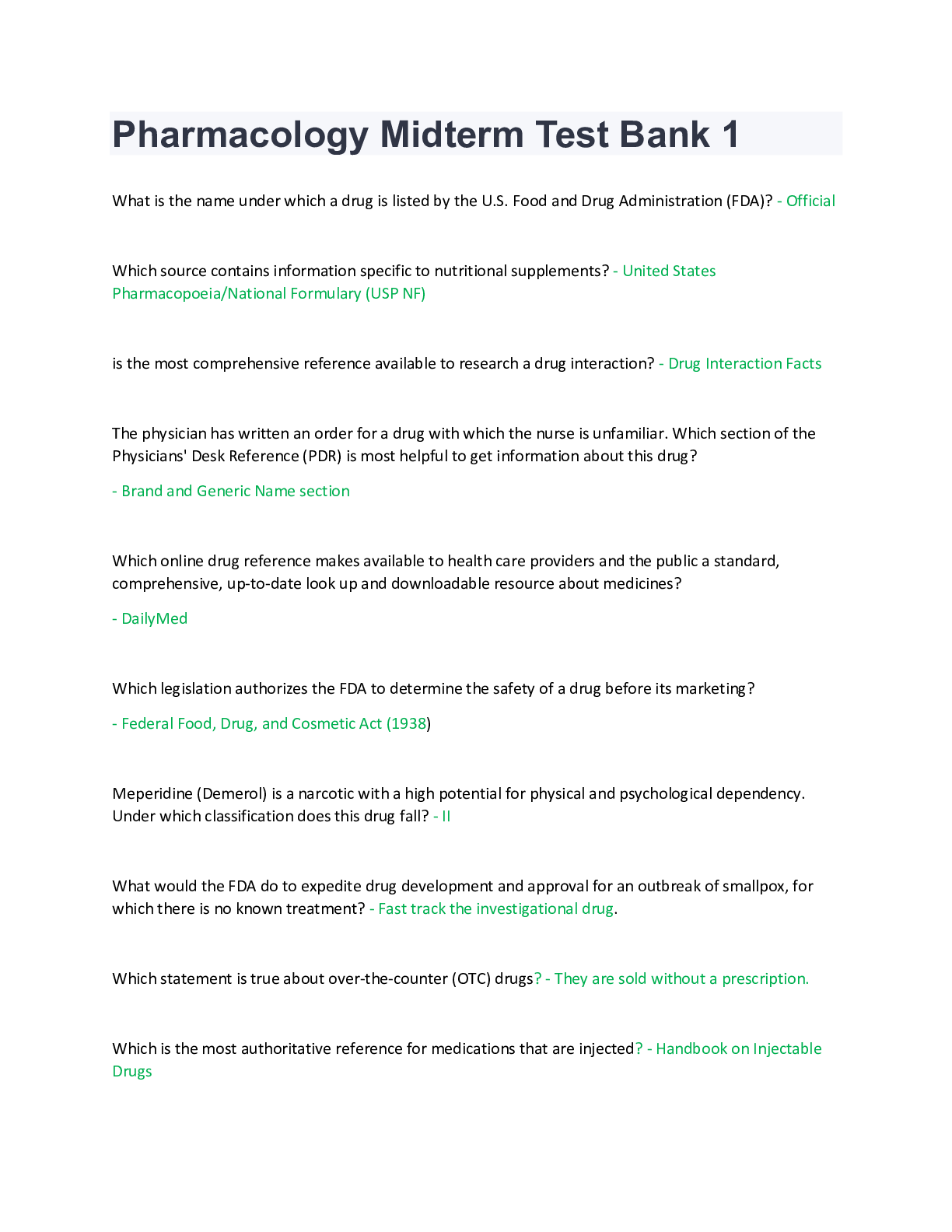
latest ATI pharmacology bundle. contains a compilation final exam reviews. 13 versions. 100% accurate
pharmacology being a wide course, i have compiled these comprehensive versions at a fair price. their contents are approved and with precise and accurate answers. download for better grades.
By bundleHub Solution guider 2 years ago
$50
14
Reviews( 0 )
Document information
Connected school, study & course
About the document
Uploaded On
Jan 29, 2022
Number of pages
9
Written in
Additional information
This document has been written for:
Uploaded
Jan 29, 2022
Downloads
0
Views
144

